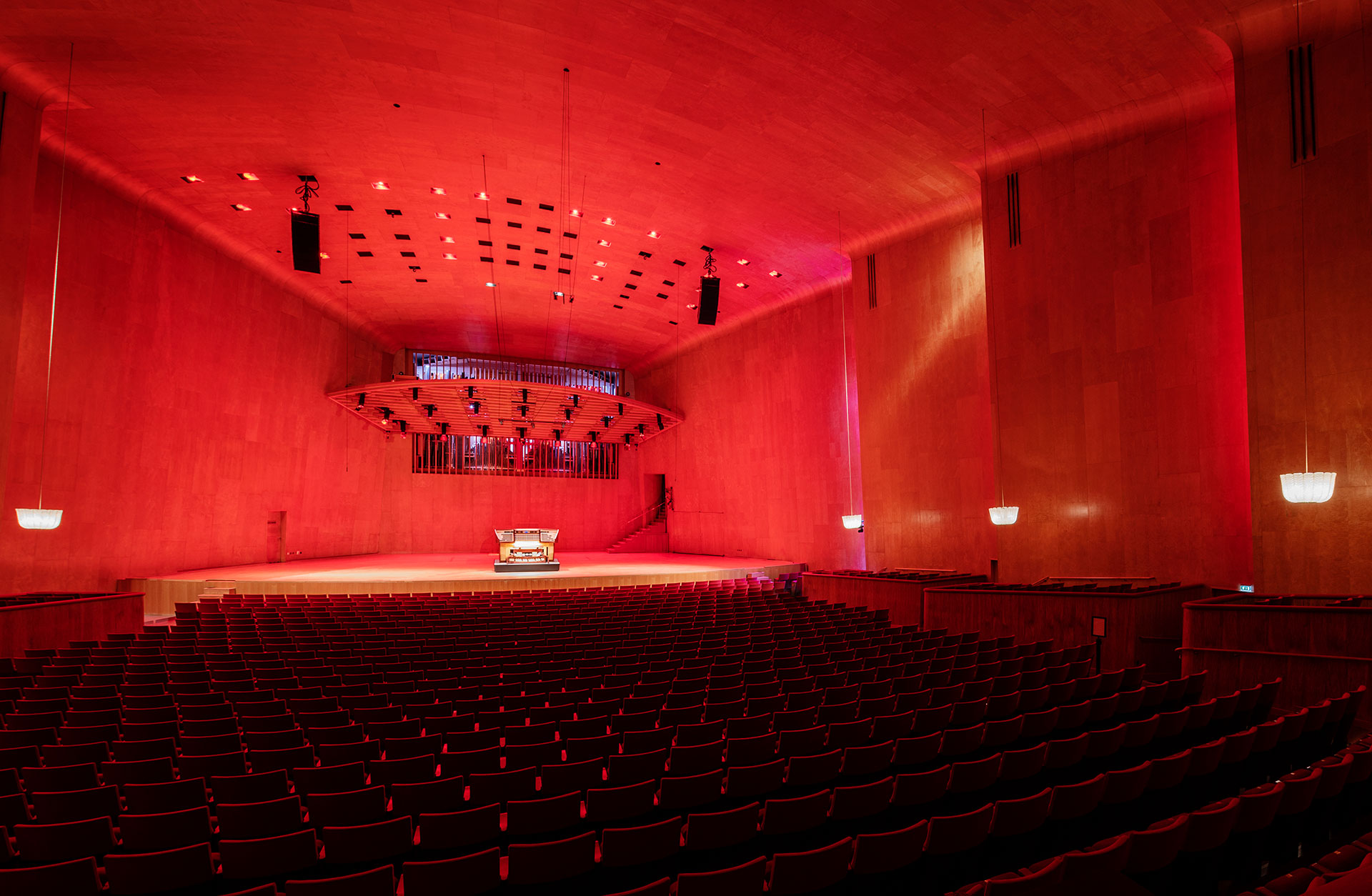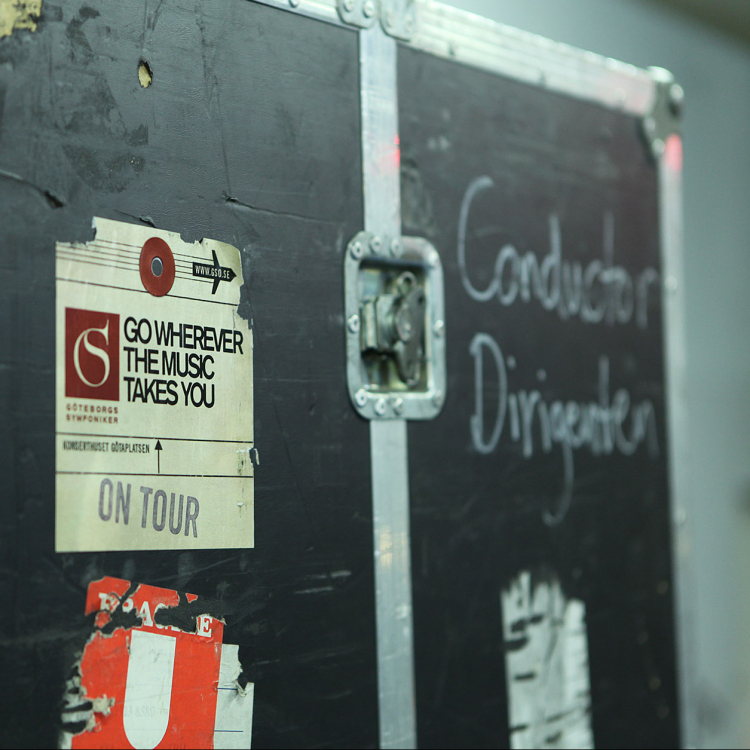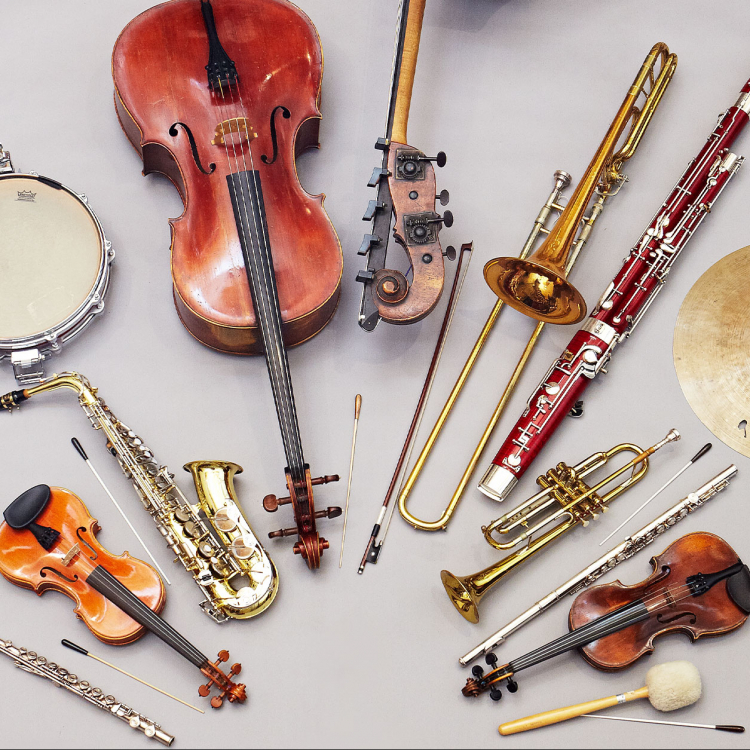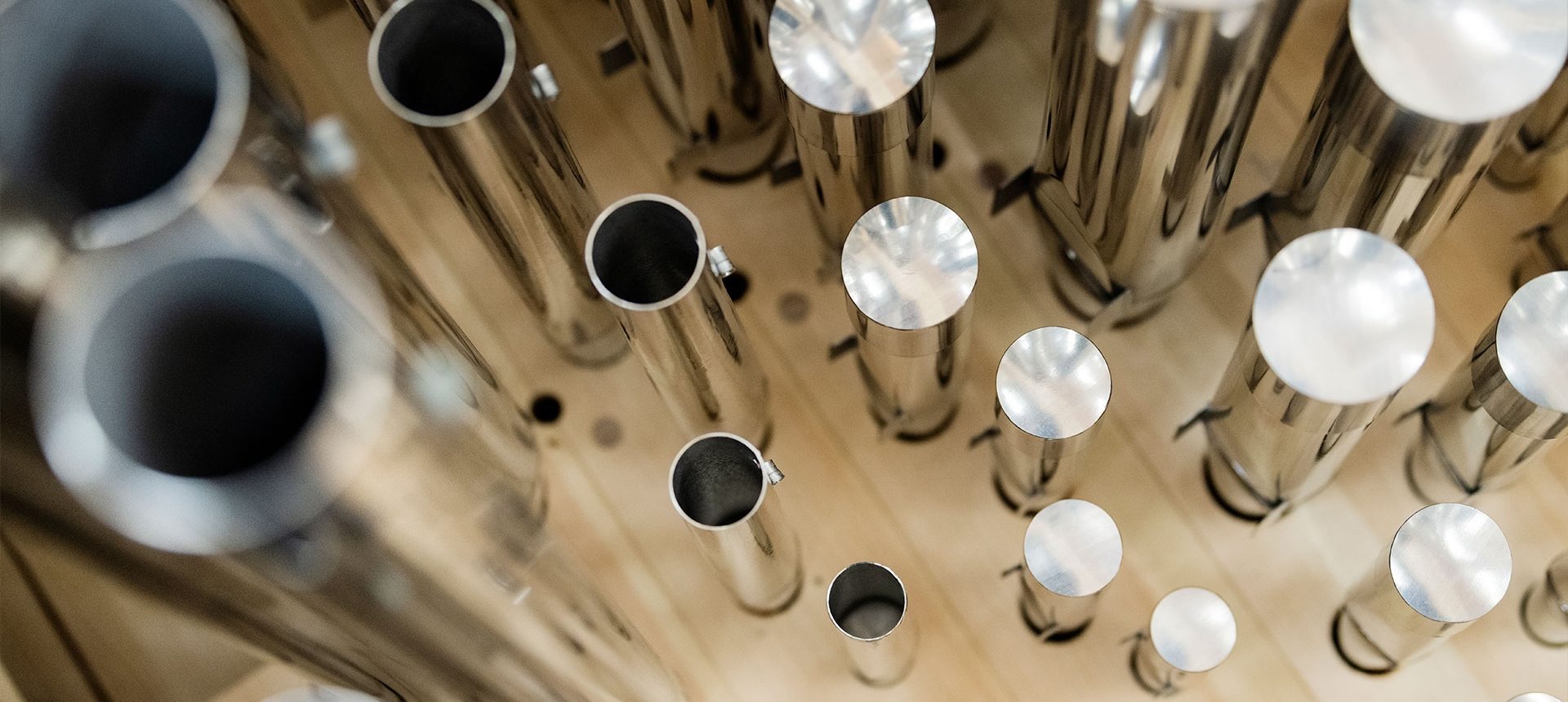* = see the entry for this term
Action
The totality of the devices in an organ that make the depressing of a key result in one or more pipes sounding.
Attack
The beginning of a sounding tone
Bombarde
A stop* with a trumpet- or trombone-like sound or a division* of the organ consisting mainly of such stops
Brustwerk
A division* of the organ with a small number of stops and a light, high-pitched sound
Choir organ
A division* with a somewhat less powerful sound than the Great organ*
Console
The ‘cockpit’ of an organ, with manual* and pedal* keyboards* as well as couplers* and other devices for determining tone colour and loudness
Coupler
A device (mechanical, pneumatic or electric) that enables stops* in more than one division* to sound when one manual* is played
Crescendo
Successively increasing loudness
Diminuendo
Successively decreasing loudness
Division
Any of the main sounding parts of an organ, consisting of a number of stops*
Flue stop
A stop* in which each pipe is constructed more or less like a recorder; the majority of the stops in an organ are flue stops, and the stops visible in the organ’s façade are of this kind
Frequency
The number of regular oscillations per second that produces a tone of a certain pitch (for example, 442 = a1)
Fundamental
The pitch heard most prominently when a tone is sounded; the fundamental always sounds together with a number of harmonics*
General crescendo
A device operated with the foot, by means of which the stops* of the organ are made to sound in a predetermined order, enabling powerful crescendo* and diminuendo* effects
Great organ
(French: Grand Orgue; German: Hauptwerk) The biggest and most powerful division* in an organ
Harmonics
Tones of higher pitch sounding together with the fundamental,* thereby creating the sound of the tone
Keyboard
The set of keys to be played on an clavier instrument, such as an organ or a piano
Keynote
The first and harmonically fundamental tone of a scale (for example, C in C major)
Manual
A keyboard* played with the hands
Mixture
A stop* in which several pipes (mostly high-pitched) sound simultaneously when a note is played
Orchestre
A division* consisting of stops* that imitate orchestral instruments (such as strings)
Organ division
see Division
Overtones
see Harmonics
Pedal
a keyboard* played with the feet; the division* sounding when such a keyboard is played
Pédale Expressif
‘expressive pedal’; a pedal* division* equipped with a swell* device
Pipework
The totality of pipes in an organ or a division*
Positif
French term roughly corresponding to Choir organ*
Principal
The most important and powerful flue* stop* in an organ
Récit
A French term for a division* equipped with a swell* device (in older French organs a division with a small number of stops, without swell)
Reed stops
Stops* constructed in a special manner, producing a sound similar to that of reed or brass instruments
Ruckpositiv
A division placed behind the organist’s back
Scaling
The various measurements of and proportions between different parts of an organ pipe, for example, the relationship between the pipe’s length and width (diameter or circumference)
Solo stop
A stop* intended for use, or used, in a solo function, accompanied on another manual*
Stop
A set (in mixtures* several sets) of pipes with different pitches but similar in sound and construction, each pipe corresponding to a key in a manual* or pedal* division*
Swell
A device, operated with the foot, for opening and closing shutters placed in front of the pipes in a division*, enabling crescendo* and diminuendo* effects
Trompette royale
‘Royal trumpet’; French name for a particularly brilliant-sounding trumpet stop*
Voicing
The organ builder’s art, creating the desired sound of an organ pipe
Windchest
A wooden box, placed below the pipes, where the air used for making the pipes sound is stored under pressure
by Sverker Jullander

The queen of instruments
The organ is called the “queen of instruments” and for a good reason: no other acoustic instrument is so varied in sound and dynamics, from the weakest, solitary tone to massive chords that make it vibrate in floors and walls. The organ in Gothenburg Concert Hall consists of more than 9000 pipes!



